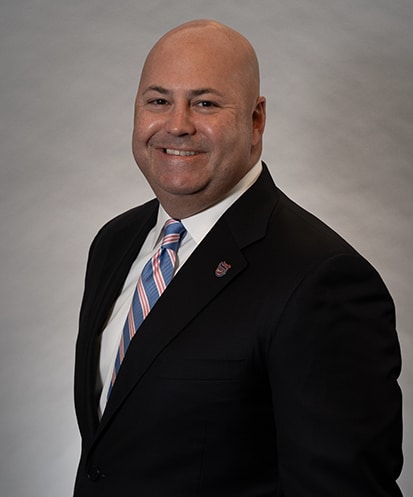Legal Malpractice, the Value of Claims, and the Pandemic
 Ames & Gough, a national brokerage in McLean, Virginia, recently conducted a survey studying the amount of legal malpractice claims that have been filed over the last two years. The report concluded that the number of legal malpractice claims began to even out in 2020, after two years of record payouts that approached $1 billion.
Ames & Gough, a national brokerage in McLean, Virginia, recently conducted a survey studying the amount of legal malpractice claims that have been filed over the last two years. The report concluded that the number of legal malpractice claims began to even out in 2020, after two years of record payouts that approached $1 billion.
According to the survey, nine out of 11 carriers expressed that the claims frequency either declined or remained flat last year. Compared to last year, 80 percent of carriers in 2019 expressed that the claims frequency increased or remained the same. The national brokerage declared that the last two years have been the worst on record for legal malpractice claim payouts, with at least four claims costing more than $100 million.
What prevented people in the past from filing legal malpractice lawsuits?
In the past, clients have been advised to seek alternative methods before deciding to sue attorneys for legal malpractice. The main reason clients were advised to do so is because winning a legal malpractice claim was difficult and expensive. Some of the other alternative solutions clients were advised to consider were reporting an attorney to their state’s disciplinary board and searching for a new attorney if the damage was not too bad.
However, the report from Ames & Gough states that the collective market of professional liability insurance carriers is beginning to become apprehensive about the frequency of legal malpractice claims moving forward after the pandemic. It is no coincidence that during the pandemic, most insurers have reported a substantial amount of legal malpractice claims with large payouts.
What were some of the highest claim payouts by professional liability insurance carriers?
The 11 professional liability insurance carriers who participated in the survey had claims with reserves of more than $500,000 for indemnity and defense costs. Of the 11 insurance carriers, six had 21 or more claims with reserves of more than $500,000. Nine of the 11 insurance carriers had to pay an excess of $50 million for a legal malpractice claim over the past two years. Two carriers had to pay a claim that totaled between $150 million and $300 million, and four of the carriers had to pay a claim that cost more than $300 million. There was even one claim on the survey that was settled for more than $400 million.
Concerns about the increase in legal malpractice claims during the pandemic
Professional liability insurance carriers are concerned that certain factors like social isolation and economic uncertainty created during the pandemic may lead to an increase in legal malpractice claims for years to come.
According to the survey, the practice area that generated the largest number of legal malpractice claims was trust and estates, an area that many people began to take interest in during the pandemic.
The second most common practice area after trust and estates was business transactions/commercial and corporate and securities. One of the reasons for the increase in legal malpractice claims under trust and estates could be the increase in engagements with retired Baby Boomers and the economic downturn.
What is legal malpractice?
Legal malpractice is a form of negligence where a lawyer fails to follow certain standards of ethical conduct, and that failure to follow the standards hurts their client. A client cannot sue their attorney for legal malpractice because the client did not win his or her case. A client has to be able to show that their attorney did not follow the standards set by their professional rules. After determining that the attorney was in violation of the professional rules, a client must then be able to prove that the attorney’s deviation from the rules impacted the client’s ability to succeed in their case.
What is the criteria for filing a legal malpractice lawsuit against an attorney?
To prove that an attorney has committed legal malpractice, there are three methods that an attorney must be found guilty of violating. These three methods are negligence in the attorney’s conduct, breach of contract, and a violation of the American Bar Association’s Rules of Professional Conduct.
If an attorney has acted in a negligent manner, acted in a conflict of interest or violated the Rules of Professional Conduct, a client can file a legal malpractice lawsuit against their attorney. To prove that an attorney was negligent, a client will either have to prove that the attorney had a duty to represent the client in a competent manner, that the attorney made a mistake that breached their duty to the client, or that their actions caused harm to the client and resulted in a loss of money.
What are some other potential reasons for the increase in legal malpractice claims?
Professional liability insurance carriers also believe that reasons such as developments in case law and poor communication have led to an increase in legal malpractice claims. With trust and estates, there have been developments in case law that allow third parties to file a legal malpractice lawsuit against an attorney who performed trust or estate work on behalf of an elderly or sick client.
The third party can be a relative or family friend of the client who decides to file a legal malpractice lawsuit. To protect themselves against this scenario, Ames & Gough recommend that attorneys write engagement agreements that establish who the client is and what services will be performed.
Poor communication can also lead to an increase in legal malpractice claims by the different methods that attorneys are communicating with clients. Attorneys may be communicating in a looser manner through various forms of communication like email and text. Ames & Gough recommend that attorneys take the time to carefully document any instructions to their clients, initiate conversations by informing clients of their decisions in a clear and concise manner, and consult with clients about what their hopes and desires are related to the case.
Please contact Paulson & Nace, PLLC through this contact form or by calling 202.463.1999.

Christopher T. Nace works in all practice areas of the firm, including medical malpractice, birth injury, drug and product liability, motor vehicle accidents, wrongful death, and other negligence and personal injury matters.
Read more about Christopher T. Nace.
